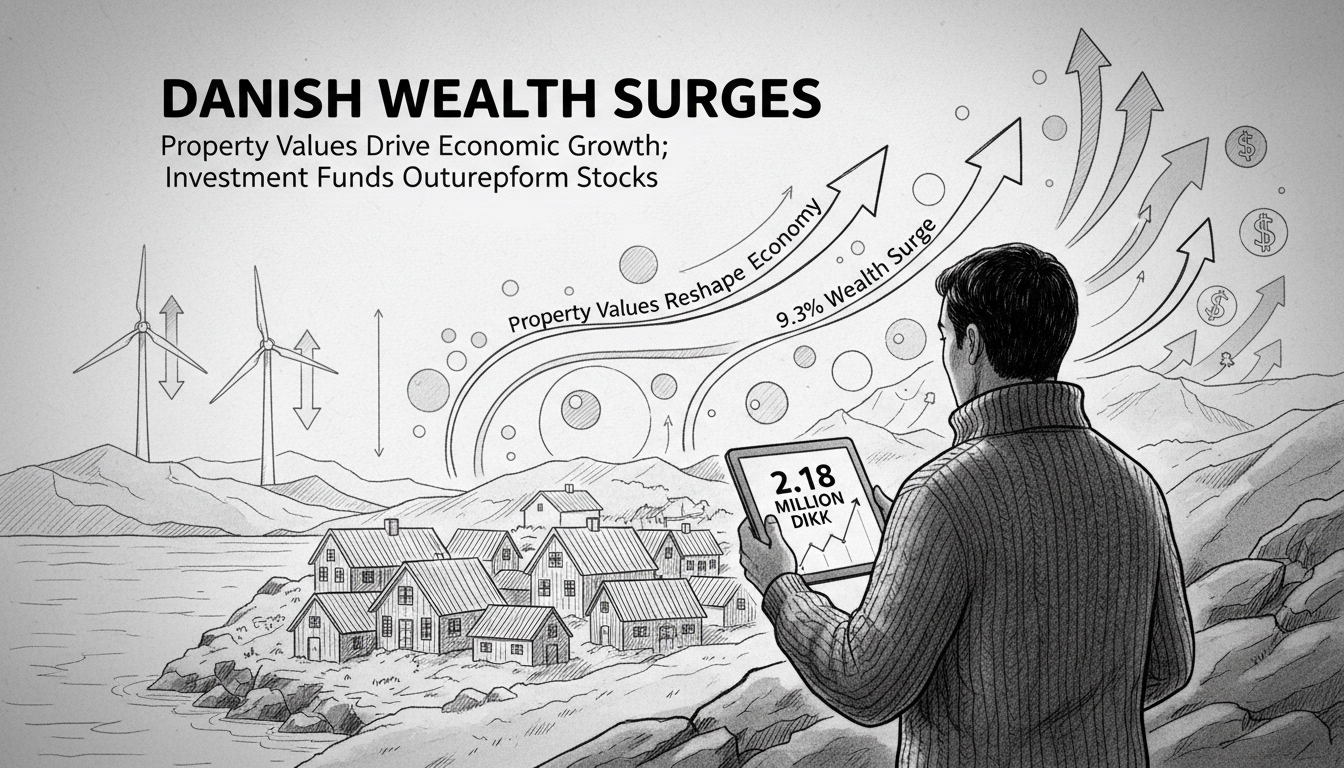Danish household wealth reached unprecedented levels in the latest quarterly data, with property revaluations driving nearly half of the growth. The average net worth for Danish adults climbed 9.3 percent during the measurement period, reaching 2,178,000 kroner. Residential property values specifically increased 8.1 percent, with statistical authorities confirming property assessment changes accounted for 50 percent of this appreciation.
Allan Sørensen, chief economist at Danish Industries, explained the broader economic context. He said housing prices and rising stock markets primarily boosted Danish wealth. Danish wealth concentrates in bricks and pension savings, he noted in his analysis. Housing and pension assets remain the largest components, but investment funds delivered the strongest growth at 14.7 percent.
Stock investments showed more modest gains, increasing just 1.2 percent. Statistical authorities attributed this underperformance to notable declines among popular Danish blue-chip companies. Major Copenhagen Stock Exchange listings including Novo Nordisk, Ørsted, and Vestas all experienced substantial price corrections during the period.
The property valuation changes created dramatic regional variations across municipalities. Some areas saw property values surge while others experienced more moderate increases. This geographical disparity will likely influence local tax revenues and municipal budgeting throughout Denmark.
Copenhagen's business districts and the Øresund region continue to demonstrate economic resilience despite these valuation shifts. The Danish economy maintains its strong export performance, particularly in renewable energy sectors where companies like Ørsted and Vestas maintain global leadership positions.
Trade implications extend beyond domestic markets. Denmark's export-driven economy benefits from stable household wealth supporting consumer spending. Higher property values typically correlate with increased consumer confidence and domestic investment.
The wealth distribution raises questions about economic equality. While average figures show growth, the concentration in property and pensions means homeowners and those with workplace pensions benefit most directly. This could widen existing wealth gaps between property owners and renters.
International observers should note Denmark's unique hybrid economy combining market capitalism with comprehensive welfare protections. The country's wealth measurements include both private assets and public pension entitlements, creating a more complete picture than many nations provide.
What comes next for Danish households? Economists monitor whether this wealth growth translates into sustainable consumer spending. They also watch for potential policy responses if regional disparities become too pronounced. The government may face pressure to address valuation inconsistencies across municipalities.

